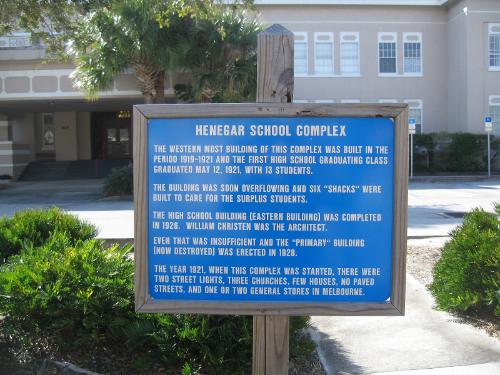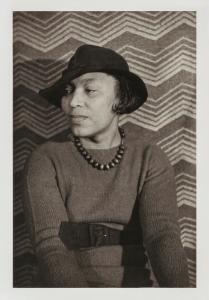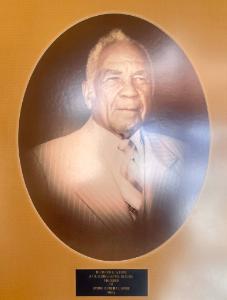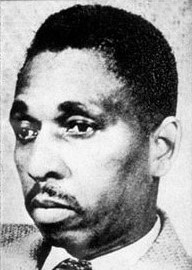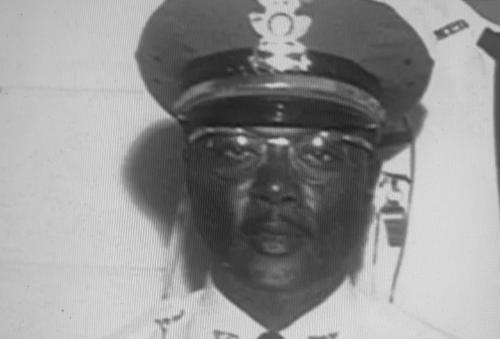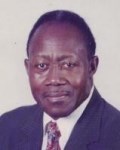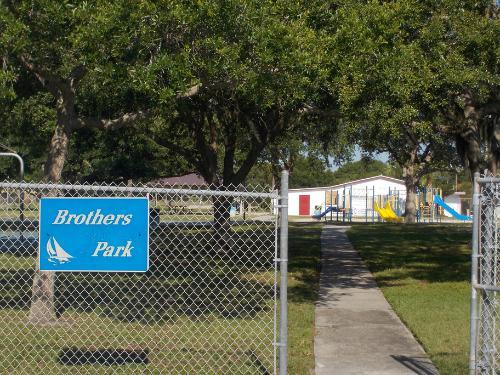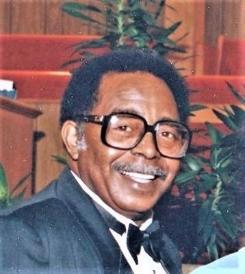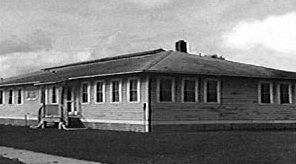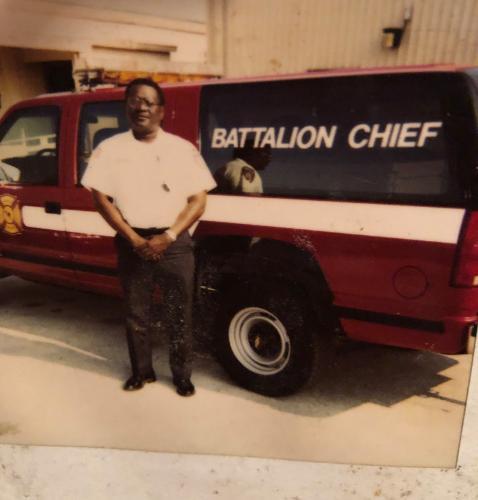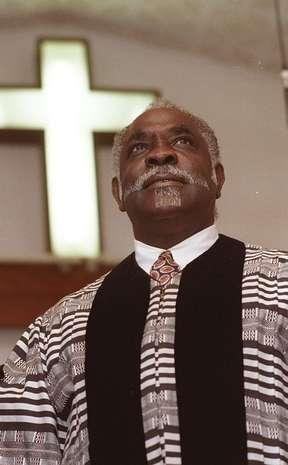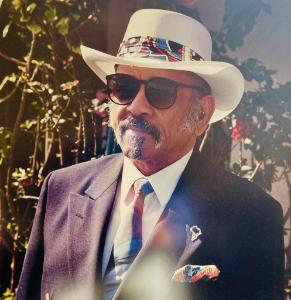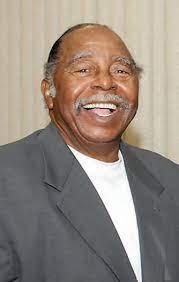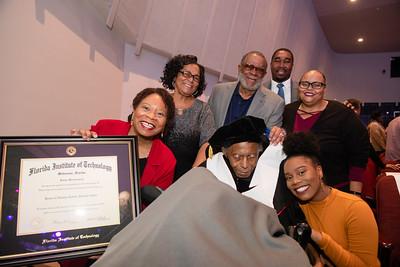Florida Tech’s Annual African American Read-In
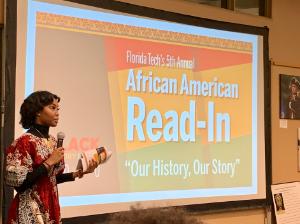 Each February, the School of Arts and Communication partners with Evans Library to present the African American Read-In. This event celebrates the words, rhythms, and sounds of black authors, musicians, poets, playwrights, and scholars.
Each February, the School of Arts and Communication partners with Evans Library to present the African American Read-In. This event celebrates the words, rhythms, and sounds of black authors, musicians, poets, playwrights, and scholars.
Florida Tech students, faculty, and alumni join with residents in the greater Brevard County community to showcase these works and amplify the voices and influences of black achievement throughout the United States.
Noted participants have included two-time shuttle astronaut and retired U.S. Navy Captain Winston Scott, a professor emeritus at Florida Tech, and Lizzie Robinson, a descendant of a survivor of the Rosewood Massacre in 1923 and the founder and president of The Real Rosewood Foundation, Inc., an organization dedicated to preserving the event's history and impact. Also, Sonya Mallard, keynote speaker of the 2022 event and coordinator of the Harry T. and Harriette V. Moore Cultural Complex in Mims.
The African American Read-In was recognized in 2020 as the Outstanding Educational Event of the Year by Florida Tech Student Life.
African American Chronology in Brevard County: A Living History
Compiled by Dr. Gordon Patterson; Photos curated by Rolanda Hatcher-Gallop
This historical timeline highlights significant events and key people in the development and growth of several areas of Brevard County, Florida. It is designed to be an interactive and inclusive compilation, and we welcome suggested verifiable additions. Please email detailed suggested additions and contact information to Rolanda Hatcher-Gallop, communication instructor, at rgallop@fit.edu.
| Year | Highlight | Source |
|---|---|---|
| 1860 | U.S. Census identifies 15 slaves, 1 free “colored,” and 6 “mulattos” in Brevard. Total Population: 246 | Florida Today, September 2, 1978 |
| 1866 | William Gleason was commissioned by the federal government to perform a survey of Florida to see if it was suitable for “Negro” colonization as part of Reconstruction. | |
| 1867 |
Sometime between 1867 and 1874, Balaam Allen, Wright Brothers, and Peter Wright, settle in what will become Melbourne.
|
(Raley & Flotte, 2002, p. 11; Weona Cleveland, 1994, pp. 95-96) |
| 1870 | U.S. Census Count: 19 African Americans and 15 Native Americans residing in Brevard County. Total Population: 1,197. | |
| 1872 | The first public school, a one-room log cabin, was built south of Rocky Water Park on the west side of Pineapple Avenue, in Eau Gallie. | (Weona Cleveland, 1994, p. 122) |
| 1880 | First Post Office in Melbourne | (Boone, 1988, p. 34) |
| 1880 | U.S. Census: 84 African Americans residing in Brevard County, 0 Native Americans. Total Population: 1,379. | |
| 1880 |
Wright Brothers and Mary Silas Brothers settle on 7 ½ acres southside of Crane Creek.
|
|
| 1880 |
Andrew Gibson, barber and restaurant owner, Titusville’s first African American resident.
|
|
| 1880 |
U.S. Census identifies 5 black men as heads of family in Melbourne; Peter Wright and Cassel Patterson listed as mail carriers; and Joseph Curley as a sailor. No occupations were listed for Balaam Allen and Wright Brothers. However, later research describes Allen and Brothers as citrus tree farmers, and Brothers later opening and operating a grocery store on Lipscomb Street.
|
|
| 1883 | Melbourne’s First School on South Riverside Drive-in area known as “Tarheel”; with no desks, students wrote on slates. First students included Annie Goode, Edith Valentine, Isabelle Clohecy, Grace Goode, Fred Valentine, Alexander Goode, Helen Valentine, John Clohecy, Jessi Goode, Willie Brothers, Susie Allen, Lizzie Trot, George Washington Blaine, Balaam Allen, and LaFayette Allen. Attended for short time by both African American and white students. | (Boone, 1988, p. 40); Melbourne Times, February 18, 1976 9A |
| 1885 | Mary and Wright Brothers, Salina and Balaam Allen, Carrie and Robert Lipscomb organize Allen Chapel African Methodist Episcopal, the first African American church in Melbourne. | |
| 1889 | Richard Goode, son of John Goode, builds a second one-room schoolhouse next to his home called Fountain Heights. | |
| 1891 |
The first sanctuary for Macedonia Baptist Church (Melbourne) was built; the church was founded under a little oak tree in 1889.
|
Melbourne Times, October 10, 1979 |
| 1891 |
The Clifton School is built in North Merritt Island by neighbors Butler Campbell and Andrew Jackson for their children. The school thrived until 1910 when most of the local children were older and pursuing higher education.
|
|
| 1893 | Mary Sears Stone begins a career as a midwife, serving the community for 54 years, delivering over 1,000 babies. | |
| 1893 |
Florida East Coast Railroad reaches Melbourne on Monday, July 3.
|
|
| 1900 | U.S. Census: Florida’s population is 528,542. Brevard County’s population is 5,258. African American population of Melbourne is 281; Eau Gallie, 277. There are a total 1,074 African Americans in Brevard County. | |
| 1900 | Mary Norton Lawrence and her husband Edward Lawrence settle in Melbourne. Mary Lawrence described Melbourne as “a lonesome town.” Her son Harry Lawrence characterized the area that is now Florida Tech’s botanical garden as “Cathead…because the area was full of wild cats and panthers. We would see them peering at us from the trees. But they never harmed anyone.” | (Weona Cleveland, 1988, p. 103) |
| 1906 | First Telephone Switchboard in Melbourne (15 telephones in city) | (Boone, 1988, p. 34) |
| 1908 |
Greater Mt. Olive African Methodist Episcopal Church is founded on May 23 by Edward Dennis Sawyer on Merritt Island.
|
Melbourne Times, February 18, 1976 8A |
| 1909 | The first school for African American children in Melbourne on the corner of Lipscomb and Line Streets. One-room school with two rows of seats and two students per seat. Approximately 16 students attended. Mrs. May Piper was the first teacher. | |
| 1910 | Birth of Harry Lawrence, son of Mary Norton Lawrence and Edward Lawrence on May 20, Emancipation Day. | (Weona Cleveland, 1988, p. 106) |
| 1911 | Melbourne’s first school bus, mule team, and wagon, driven by C.R. Johnson. | |
| 1912 |
Scott Chapel (United Methodist) Church organized. John and Mary Stone were among the founders.
|
(Weona Cleveland, 1994, p. 97) |
| 1912 | Union Cypress Sawmill was established in Hopkins (Southside of Crane Creek); 300 men were employed. | (Boone, 1988, p. 47) |
| 1915 | Mt. Moriah Missionary Baptist Church is organized. Rev. George Scarlett was the first pastor. | |
| 1918 | Melbourne Public Library opens in Campbell’s store on lower New Haven. | (Boone, 1988, p. 40) |
| 1918 | Macedonia Baptist Church and Allen Chapel obtain electricity. | (Weona Cleveland, 1994, p. 97) |
| 1918 | Many African Americans from Melbourne fought in WWI. A farewell reception was held for them in May at the Stone Hotel (rooming house) | (Weona Cleveland, 1994, p. 97) |
| 1919 |
Construction of a building later known as “Henegar Complex” began on New Haven Avenue. The cost was $6,400. The second building was constructed in 1926.
|
|
| 1919 | First Bridge Across Indian River in Melbourne. | Boone (1988, p. 33) |
| 1920 | African American students in Eau Gallie in the 1920s attended West Eau Gallie School located on the west side of the Eau Gallie Cemetery. | |
| 1921 (Circa) | Estella Jackson begins her career as a midwife. She will deliver more than 514 children. The charge for delivering a baby in the 1940s was $10. | Weona Cleveland, 1994, p. 98) |
| 1923 | Construction starts on Cocoa Junior High School, which is partially funded by the Julius Rosenwald Fund. The school serves African American students and includes Harry T. Moore among its teachers. The building became Monroe High School in 1947 but was closed following the 1954 Brown v. Board of Education decision when its students were sent to integrate local public schools. | |
| 1923 | J.N. Tucker, the prominent citizen in Eau Gallie, works his way up from plumber’s helper to owner of a plumbing business. | (Weona Cleveland, 1994, p. 98) |
| 1924 | Melbourne Municipal Band organized | (Boone, 1988, p. 40) |
| 1926 | Ten men seized James Clark, chauffeur for the traveling salesman, and lynched him on July 11 in Eau Gallie. The site of the lynching was near Parkway Drive and U.S. 1. It was known as Lynching Tree Drive until 1980 when the name was changed to Legendary Lane. Former Brevard County Commissioner Joe Wickham was a teenager in 1926. “They were mean,” Wickham told a reporter from the Orlando Sentinel. “They just took the law into their own hands. It was sad. Very sad.” | ("Florida Frontiers “The Lynching of James Clark” | Florida Historical Society," 2016) |
| 1928 | Lipscomb Street Rooming House owned by Mary Lawrence burns down. | |
| 1928 | Melbourne’s First Hospital opens on site of the former Crenshaw Hotel. | |
| 1928 | Melbourne’s first airport is located west of where US 192 intersects I-95 | (Boone, 1988, p. 39) |
| 1929 |
Zora Neale Hurston writes her first book in Eau Gallie. Lives in a cottage rented from Lansing Gleason on the corner of Guava and Aurora Road.
|
|
| 1930 |
Richard Stone, son of Melbourne pioneer John Stone, files patent for automobile turn signal.
|
(Weona Cleveland, 1988, p. 111) |
| 1930 | Melbourne Vocational School founded on site of what is today Brothers Park (John Stone school’s first superintendent) | (Weona Cleveland, 1994, p. 98) |
| 1933 | Ten students in first graduating class of Melbourne Vocational School. Class included Norman Coates. Coates would graduate from Bethune-Cookman College and Florida A & M, returning to teach sixth grade in Cocoa. His pay was $50 a month. When he asked why white teachers received more, he was told “You don’t need as much money. Your lifestyle is different. You eat different kinds of food, live in different kinds of homes.” Coates observed, “How could we change our lifestyle if they would not pay us the same, they paid whites.” | (Weona Cleveland, 1976) |
| 1934 |
Harry T. Moore founds Brevard County National Association for the Advancement of Colored People (NAACP)
|
(Rogers, 2021) |
| 1937 | Harry T. Moore and Thurgood Marshall file first lawsuit in the South demanding equal pay for African American and White teachers | |
| 1937 | Martha Hankins comes to south Melbourne. Opens Rescue House organizes two churches and makes seven trips to Monrovia, Liberia where she established a mission. Her granddaughter, Carol Williams Glanton, will go on to be a leader in Melbourne. | (Raley & Flotte, 2002, p. 97) |
| 1937 | Ground broken on Brevard Hospital | |
| 1938 | Meeting minutes from the Brevard County School Board note white principals were paid $200-235 per month as compared to $82-110 for Black principals. | (Zuckerman, p. 6A) |
| 1939 | Notice appears in Melbourne Times informing black citizens they could not vote in Democratic Primaries. It read: “The state Democratic Executive Committee has ruled that only white Democrats can vote in the Democratic Primaries.” | (Zuckerman, p. 6A) |
| 1940 | J.N. Tucker, Willie Hubert, and Charlie Moore encourage Eau Gallie to hire an African American policeman. Their efforts were rebuffed. | (Weona Cleveland, 1994, p. 98) |
| 1942 | Colored Civic League forms in Melbourne | |
| 1946 | Brevard School Board terminates Harry T. and Harriette V. Moore’s teaching contracts. | (Rogers, 2021) |
| 1947 | Azie B. Horne becomes first African American football coach at Melbourne Vocational School. Team was originally known as the “Flying Eagles.” Name was later changed to “Gophers.” | |
| 1947 | Leaders of Colored Civic League pleaded with Melbourne City Commission to employ a black policeman to patrol African American residential area. | (Weona Cleveland, 1994, p. 122) |
| 1947 |
James R. Ryoland becomes Melbourne’s first African American policeman. He was given a badge, but no uniform. He carried his own gun and used a 1936 automobile on his patrols. Officer Ryoland served on the force for 20 years. |
(Weona Cleveland, 1994, p. 122) |
| 1949 | Harry T. Moore, Executive Director of the Florida NAACP, organized campaign to free Groveland Four who were accused of raping a white woman. A mob attacks jail in Groveland and National Guard is called to restore order. In 1951, Thurgood Marshall led team won appeal for two of the convictions. | |
| 1950 | U.S. Census Florida’s population: 2,771,305; Nonwhite 605,254, Brevard County 23,653. Melbourne 4,223. Median number of years of school White 11.7; Nonwhite 6.3. |
|
| 1950 |
Jesse Buggs, Sr., and others organize South Brevard NAACP, battling for Civil Rights. Rev. Buggs will serve as the organization’s president for 12 years. South Brevard NAACP pickets Van Croix Theater, segregated lunch counters, and spearheaded integration of Melbourne Golf Course. Rev. Buggs will end his career as pastor of Mt. Moriah Missionary Baptist Church.
|
|
| 1951 | Zora Neale Hurston returns to Eau Gallie to live in cottage rented from Lansing Gleason until 1956; serves as a substitute teacher at Melbourne Vocational School; later, librarian at Pan American Library at Missile Test Project | |
| 1951 | Harriet and Harry T. Moore assassinated on Christmas Day. | |
| 1952 | Foster Eugene Thayer becomes Melbourne’s second African American policeman. | (Weona Cleveland, 1994, p. 123) |
| 1953 | Melbourne Vocational School burns down in December. Arson was suspected. No charges brought. | (Weona Cleveland, 1994, p. 98) |
| 1955 | Cavalier Men’s Club raise funds to assist Melbourne NAACP in fight for civil rights | |
| 1957 | Zora Neale Hurston moves to Ft. Pierce. | |
| 1957 | Melbourne Vocational High School opens. | (Weona Cleveland, 1994, p. 98) |
| 1960 | Rev. Jesse Buggs was defeated in his run for Melbourne City Council. | (Weona Cleveland, 1994, p. 98) |
| 1961 |
Petition from Central Brevard NAACP Youth Council calling for complete desegregation of schools “For some time now we have waited fruitlessly for you to recognize and correct unfair practice of using the taxes of our parents to help foster the recreational programs for Cocoa High School and other white groups in our community…We believe the time is now for you to cease this practice of injustice and live up to your oath to serve the people.” |
|
| 1961 | NAACP files lawsuit against Brevard School Board calling for desegregation of schools. | ("Lawsuit Filed to Desegregate Brevard Schools," 1961) |
| 1961 |
African American Civic Improvement Association in south Melbourne raises funds to build swimming pool in Brothers Park for Black residents. |
(Weona Cleveland, 1985) |
| 1961 | Eau Gallie’s mayor calls off football game between white Eau Gallie High School and team from Jamestown, N.Y. because New York team has single Black player. Story made national news. | (Weona Cleveland, 1985) |
| 1962 | Jon Brothers is defeated in his run for Melbourne’s City Council. | (Weona Cleveland, 1994, p. 98) |
| 1962 | Jesse Buggs, Emmit Stadom, and Charles Stadom file suit to integrate Melbourne Golf and Country Club. | (Weona Cleveland, 1985, p. 1B) |
| 1962 | In March, the NAACP holds rally at Macedonia Baptist Church protesting discrimination in Melbourne. | (Zuckerman, p. 6A) |
| 1963 | Three-quarters of restaurants in Melbourne agree to 60-day trial period in which their restaurants will be integrated. | (Weona Cleveland, 1985, p. 1B) |
| 1964 | Trial begins on NAACP lawsuit to desegregate Brevard Schools in Federal District Court in Orlando two- and one-half years after filing | ("Brevard School Integration Trial to Start," 1964) |
| 1965 | Ted Nichols became Melbourne’s first African American on the city council. | Weona Cleveland, 1994, p. 98) |
| 1965 | South Brevard NAACP organizes a voter registration march beginning at Allen Chapel with 120 Black and White participants; Brevard Hospital in Melbourne is cited for maintaining segregation. Hospital administrator Harry Underhill responded, “until someone come up with definite charges, we don’t know what they are talking about.” | (Weona Cleveland, 1985, p. 1B) |
| 1967 | Melbourne Vocational High School’s last graduating class before school is integrated. This was the first year that the graduates had a Yearbook and a senior trip | |
| 1969 | Federal District Court Judge George C. Young sets deadline for plan to desegregate Poinsett and Stone Middle School to February 20. | |
| 1969 | In June, 600 white parents, members of Association of Concerned Taxpayers in Melbourne, organize boycott of planned school bussing of their children to “all-Negro” Stone Elementary School. | |
| 1969 |
Julius Montgomery is elected to Melbourne’s City Council.
|
(Weona Cleveland, 1994, p. 98) |
| 1969 | Civil disorder in south Melbourne, rioters “bombed gas plants near Stone School and police blocked streets.” | (White, 1987, p. 2B) |
| 1970 | Melbourne police used tear gas against African American youth in two-night disturbance in south Melbourne. | (White, 1987, p. 2B) |
| 1971 |
Defense Race Relations Institute founded at Patrick Air Force Base following serious disturbances at U.S. military facilities. By 1989, more than 10,000 students attend 16-week program to end racial discrimination within the ranks. Program is now known as Department of Defense equal Opportunity Management Institute (DEOMI).
|
|
| 1972 | Robert Lee Hadley hired as the Palm Bay Police Department’s first black police officer. | |
| 1973 | Federal Court approved Brevard School Board plan for desegregation of schools on May 11. | |
| 1973 | U.S. District Court Judge George Young notes that Brevard County School Board’s supplement plan for desegregation of Poinsett Elementary School did not provide for integration of grades one and two. Rev. W.O. Wells, Brevard educational coordinator for the NAACP based in Cocoa, criticized the supplement, noting only black children would be bussed. | (Blane, 1973, p. 1B) |
| 1973 | In February, 4,000 Black students boycott Brevard Schools in protest of plans to bus 500 black students from Poinsett Elementary School. | ("Poinsett Black Pupils Returning," 1973) |
| 1976 | Discrimination case against Brevard School Board dismissed without prejudice September 8. | |
| 1977 | Sarah Hodge, first African American air traffic controller at Melbourne Airport. | |
| 1980 |
James Bartell joined the Palm Bay Fire Department as a firefighter. He eventually worked his way up to Battalion Chief in 1995. He was the first black battalion chief.
|
|
| 1981 | Lynching Tree Drive renamed Legendary Lane in Eau Gallie. | Melbourne Times, August 27, 1981 |
| 1982 |
Reverend Harvey L. Riley becomes Shepherd of the Mount Moriah Missionary Baptist Church in Palm Bay. Rev. Riley owned and operated Riley’s Scientific Barber Shop in Cocoa, Florida for 20 years. He studied at Brevard Community College, the University of Central Florida, and the National Theological Seminary.
|
|
| 1984 | Melbourne City Council honors Harry T. Lawrence by naming park for his service to the community. Lawrence was organizer of the Colored Civic League | (Weona Cleveland, 1994, p. 129) |
| 1990 | Brevard School Board Agenda item filed to modify BPS desegregation plan to approve keeping Clearlake, Kennedy, and McNair mainland 6-8 grade middle schools, designating McNair as a magnet school. | |
| 1992 | BPS Board modifies desegregation plan to designate Gardendale a magnet school. | |
| 1993 | Brevard County Commissioners vote to name county’s new courthouse “The Harry T. and Harriette Moore Justice Center.” | |
| 1993 |
Rudolph V. “Rudy” Stone of Cocoa, son of Richard Stone, is appointed to Cocoa City Council. Known as a trailblazer in civil rights, education, community service, and business, he would be elected to a three-year term in November 1993 and appointed Deputy Mayor in 1995.
|
|
| 1999 | State of Florida approved designation of the Moores’ home as a Florida Heritage Landmark. | |
| 2000 | U.S. Census Brevard population: 476,230; African American residents: 40,000; Latino residents: 21,970. City of Melbourne’s population is 71,382; 9.3% of population is African American, another 5.5% are Latino. |
|
| 2006 |
Florida Institute of Technology holds first Julius Montgomery Pioneer Award Ceremony. The first recipient is Julius Montgomery.
|
|
| 2013 | BPS Board approved resolution to establish Stone Middle and Palm Bay High as new magnet schools. | |
| 2013 | In March, the Harry T. and Harriette V. Moore Post office is named in their honor in Cocoa. | |
| 2019 | Airport Blvd. in Melbourne is renamed Dr. Martin Luther King Jr. Blvd. culminating a 32-year long campaign. On July 14, 1987, Rev. Carol Williams Glanton asked the Melbourne City Council to rename University Boulevard in King’s honor without success. | (@Florida_Today, 2019) |
| 2020 |
Julius Montgomery awarded doctorate by Florida Institute of Technology.
|
|
| 2021 | Brevard School Board passes resolution officially recognizing unjust firings of Harry T. and Harriette V. Moore in 1946. | (Rogers, 2021) |
Special Thanks To:
- Retired Palm Bay Battalion Chief James Bartell
- The City of Cocoa, Florida
- The City of Melbourne, Florida
- The family of the late Roosevelt Evans
- Evans Center
- Florida Today
- Roz Foster, founder and president of the North Brevard Heritage Foundation, Inc.
- Greater Allen Chapel AME Church
- Greater Mount Olive AME Church
- The family of the late Robert L. Hadley
- Harry T. & Harriette V. Moore Cultural Complex, Inc.
- Teri Jones, author and historian in Melbourne, Florida
- Macedonia Missionary Baptist Church
- Joseph McNeil, president, the Concerned Citizens Committee of South Brevard, Inc.
- The family of the late Julius Montgomery
- The family of the late James R. Ryoland
- Scott Chapel United Methodist Church
- Jan Stone, wife of the late Rudy Stone and owner of the historic Stone Funeral Home


 Give to Florida Tech
Give to Florida Tech 

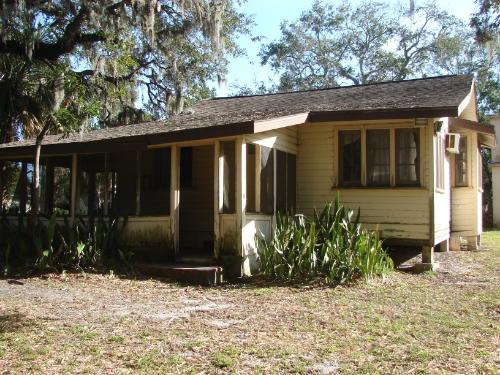
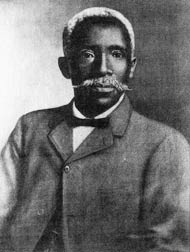
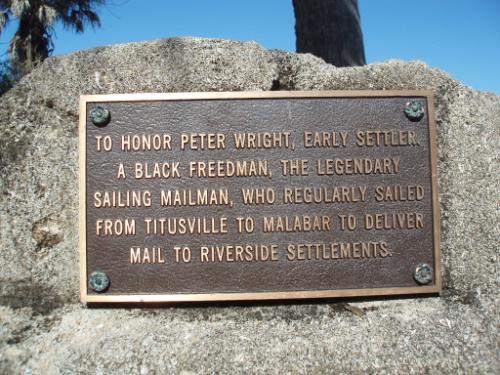
.jpg)
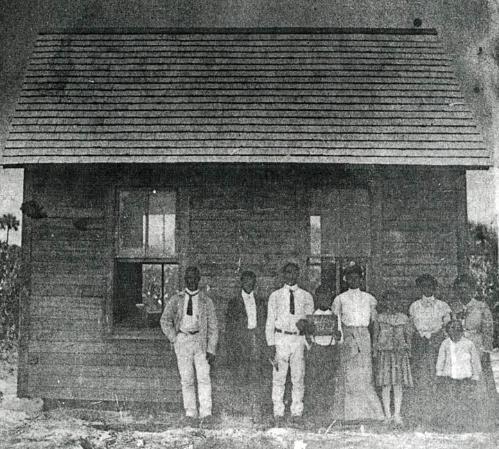

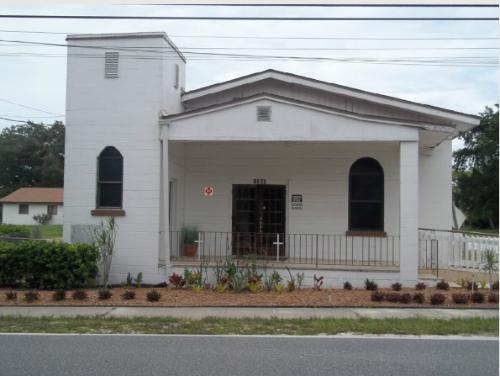
-500x374.jpg)
